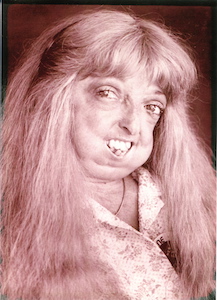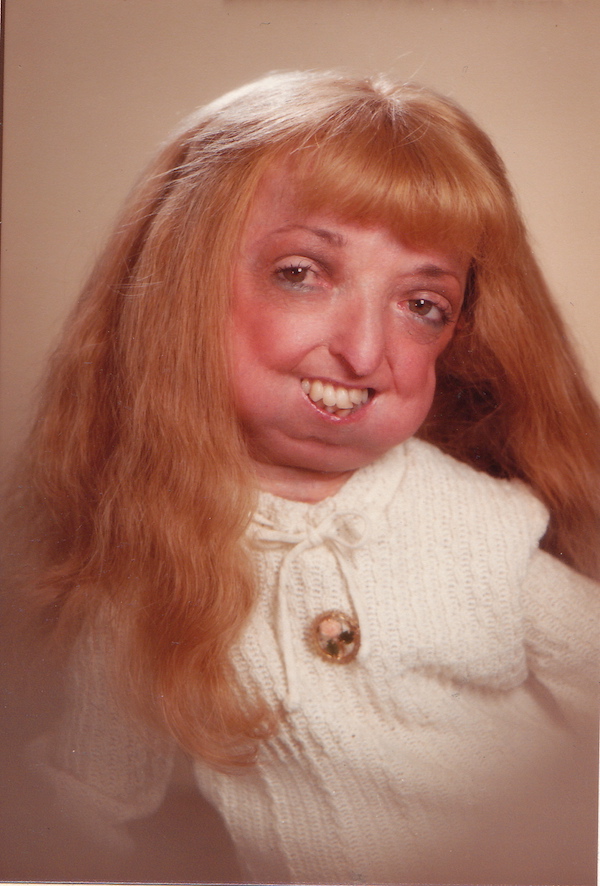A Living China Doll
Like a china doll, Meg Casey's fragile, not brittle, bones broke easily. Born with the rare disease progeria, she was constantly in the hospital for broken bones from her love of horseplay. She was not shielded from life other than her mom waiting until she was 16 to disclose Meg outlived the medical prediction that most progeriacs die before 12. It was understood by everyone, even the young kids, that she was fragile.
She zoomed up and down the street on a chain driven tricycle so as to not fall off a conventional bike. There were no protective bike helmets in Meg's size until she was a 3 1/2 foot, 40 pound adult. It didn't stop her. She wanted nothing to do with living her life in a bubble.
In 1955 one seldom saw a child in a wheelchair or needing special education. People with disabilities were often institutionalized before the concept of mainstreaming. Few movies or TV shows before 1970 showed positive portrayals of the handicapped.
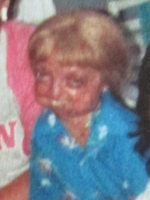
photo courtesy of Elaine Morrisey
Charmed by her outgoing personality and smile people quickly got used to Meg treating her like anybody else because that's the way she wanted it. She was funny, never shied away and was far more than what she looked like.
Meg was not afraid to give anybody picking on her the old "kiss my fanny". Family only stepped in if somebody raised a hand. Most of the time there was no need, she handled the situation.
Photographers tried to accent the disease instead of the person. She found it very rude that people would just stare. Children asked her "Are you a little girl?" One time the kids were saying she looked like a monster, not realizing what they are saying. They were about 10 years old and never saw someone that looked different. People stop and stare and ask questions and she’d talk about it, but kids are so open-minded at that age. You merely explain it to them and they shrug it off.
Open Door Policy
The primary driving force behind Meg Casey's positive attitude was her mother who taught etiquette. A short lady, Margaret was always in high heals even her bathroom slippers had a wedge in them.
Meg learned organizational skills from her mother, a bookkeeper for the family's fuel business and business teacher in the Milford schools. A very strong and confident woman, she instilled the same strength and confidence take no prisoner approach into Meg. Her parents taught her to stand up for herself, defying her 6 bigger and stronger older brothers to be a strong independent woman. Although mom made allowances for Meg, she never made excuses for her, and neither did Meg. Everyone was treated equally, expected to pull their share in doing the chores and be accountable for their actions. Meg would let her brothers know in no uncertain terms when they acted as idiots and they would do the same for her. And so she just went out with all the confidence in the world and faced the world.
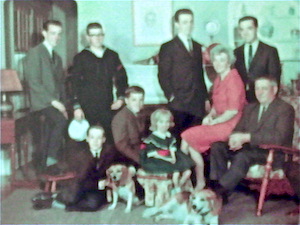
Meg Casey and family
photo courtesy of the Casey family
The Casey household served as a good role models with an open door policy. Friends would be another face at the table, sometimes more of them than family. Everyone was treated equally with respect based upon commonalities. Her great sense of humor didn't put others down based upon some untrue stereotype. The Caseys considered as part of the family one of the first black families in suburban Milford in the 50s. The civil rights of the 1960's influenced the handicapped equal rights movement.
Meg's mom wrote a personal note to those with an illness or going through a tragedy in their family. About 250 friends received the family
's Christmas card printed with Meg's drawings. Anybody by themselves on the holidays received cookies delivered by the Casey kids.
Meg was always included in holidays and the annual family reunion which needed 4 or 5 port-a-potties. Meg was creative and made fantastic Halloween costumes, once as a little jack-in-the-box. Father Flynn shared Thanksgiving and Christmas with the Casey family often debating with the feisty Meg Casey. Meg often was her father's fishing buddy in a rowboat at Cedar Beach. Meg never caught anything, any kind of fish would have been a threat to her.
Meg joined her dad on fuel oil deliveries giving her an opportunity to meet a lot of people. She got along with everyone from CEOs to Hell's Angels. She wasn't afraid of who she was because she was confident in who she was.
Everyone was treated equally and accountable for their actions. Meg would let her brothers know in no uncertain terms when they acted as idiots and they would also do the same for her.
Meg Casey did not seek sympathy, calling out handicapped people she felt were using their condition as an excuse. Anyone that was wallowing in pity would not find it in Meg. She had opinions, but never voiced anything close to being sorry for herself.
Meg accepted people as they presented themselves to her, never projecting onto them something she thought was missing. Never tried to twist anything they said into what might sound better.
Republican, Democrat or bureaucrat?
Their father taught Meg and her brothers to get their hands dirty and care for people 24/7 no matter what the weather was.
Meg Casey's mother led others by example to get things done in an appropriate way. She organized women from Saint Ann's Church to clean a dumping site for a playground.
She did not run for office to oppose Republicans or Democrats but to fight bureaucrats. She killed those in office with kindness by telling them "This is the right thing to do." and then asked each of them "What are you gonna do?"
The Casey kids pursued grade school public speaking. They improved their non-verbal communication skills by practicing gestures and looks in the bathroom mirror. Meg advised a parent writing to her column to take acting lessons in order to appear confident about their handicapped child.
Meg wasn’t always taken seriously because her height was of a 10 years old, but she was a smart woman. She would never admit defeat. She fought all her life to be treated fairly, just give her a shot. Meg learned to always be confident wherever she went. She was always able to tell people: Hey! Don't stare at me, I'm a person. Hello, how are you?

Meg Casey visits kids
photo courtesy of the Casey family
Meg shared her time mentoring anyone that needed help or assistance. She spoke to the kids in school and reaching out to everyone writing to her weekly Most Able Disabled column in the local paper. Meg didn’t wait for someone else to say what was needed, she would see it and talk about it herself.
Meg saw the press interrogating some kids with progeria with dumb questions about premature aging on a 1981 Make A Wish trip to Disneyland. That would be difficult for an adult to answer, never mind a kid. Meg flew out that night and contacted as many people as she could.
Meg remarked about the experience: "The reward of erasing ignorance is to have people look in my direction and not see a disabled person but to instantly recognize me as Meg, a friend or enemy based on what I have said or done and not due to a quirk of genetics and the packaging I have come housed in."
Meg highlighted the human side of the kids by always advocating to let them be as normal as possible. She always had a kind word and found the good in everyone but was going to be brutally honest with you if you needed it. A doctor's prognosis doesn't have to be a deadline. It may eventually but Meg gave hope to the parents that you can't live your life like that.
Independent, She Loved It
Meg regarded her condition as an inconvenience, not defining who she was. Her positive attitude referred to barriers as "obstacles". She'd deal with whatever that came her way, persevering and adapted by doing things differently. Meg chose to draw over using difficult to open oil paint tubes. If there was a problem like heavy doors she&39;d ask for help and thank them.
Meg was not a safe player, she wanted to taste it all. She loved dancing while 5 or 6 friends encircled her as a protective buffer in crowds at concerts or the local Shakespeare Theater.
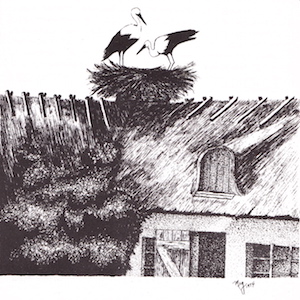
Nesting
by Meg Casey
Meg lived independently in a house specially for her by the Casey family. The windows were set so she could look out at the beach. The full size kitchen had low counters. Spiral seat piano stools allowed anyone to adjust the height. Meg preferred to stand to drink her cup of tea using a straw because beverages would dribble due to a deformed mouth. All of her cold drinks were in a stem wineglass to fit her tiny, almost infant size hands.
Meg took driving lessons in a car fitted with a special steering wheel and a booster seat but didn't get a license. A minor accident could've caused her significant injury so she was always strapped in safely even as a passenger. There also was the worry of accidents caused by people seeing her behind the wheel thinking an 8 year old child was driving.
Her roommate Judy Garry drove and helped shop. Judy loaded the wash, putting the clothes on the couch where she would fold them, because she could. It took her a long time to do it.
Meg was very pissed when people drove with a handicapped sticker but weren't handicapped. They'd just drive up, put on the handicapped sign, shut the door and walk into the store. Handicapped parking was originally to provide close access for people whose disability restricts their walking.
Everyone treated her as she was, just Meg. If they saw her at the beach they'd offer to carry her beach chair, set it up, say "see you later" leaving her with her book.
Normal Like Everybody Else
Meg wasn’t afraid to take controversial stands to advocate for many issues before they were acceptable as long as they didn't hurt people. Meg’s view was: Look at me, I'm a person, I'm living a full life. Listen, don't discard me just because you think that something bad is gonna happen.
She was fully human in every way with hopes, dreams and ambitions. She would've liked to have done voice overs for cartoons. Everything was condensed in her small jaw, she didn't know who dreaded cavities more, her or Dr. Fass, her dentist.
In grammar school Meg fit in with every kid wanting to be her friend because she was "neat" but things were different as a teen. Her one regret was not having a romance in her life. A couple of gentlemen tried to be a boyfriend, and by the end of her life, she even had that.

Meg Casey award
photo courtesy of Milford Citizen
Meg Casey was a handicapped advocate, a treat everybody equally and with respect advocate but also a fun loving advocate. Family tried not treating her differently. And she tried her best to be an example by acting and being treated as normal as possible. She went on with her life.
In 1985, Meg came pretty close to her wish to party on the dance floor when she died at double the life expectancy for Progeriacs to 29 and 238 days. A stubborn foot infection flared up at her brother T.J.'s anniversary party on Memorial Day weekend sending her to Yale-New Haven Hospital dying 12 hours later. Meg Casey enjoyed her life until the end. Not wanting to know in advance when that would be she refused using a respirator. Like many others with progeria, Meg resented the constant exams and testing by doctors like a lab rat. Strong-willed to the end, Meg denied allowing the "experts" to further probing by stating that there was to be no autopsy.
Meg saw through people supposedly having her best interests but had ulterior motives to promote their new book, to be in a side show or just trying to profit off a situation. She could be harsh if someone was out of line and curse them out to defend herself.
Meg always has something witty or valid to say but was very careful of what she put down on paper because she didn't want to be misunderstood. She resented some in the press trying to put words in her mouth.
For her funeral psalm Meg Casey wrote:
"I'm not sorry for myself; it wouldn't do me any good if I were. I've had a happier and fuller life than many "normal" people and I've learned to accept myself and to know my capabilities. I've learned that it's alright to strive for dreams; that I can do anything if I set my mind to it." "If you must bury something, let it be my faults, my weaknesses, my prejudices. I promise that then, I will live forever.":
What shaped Meg Casey was a supportive family treating everybody fairly, not treating her as unique or special, just like everybody else.
Which one of us is handicapped? Not Meg Casey's outlook.
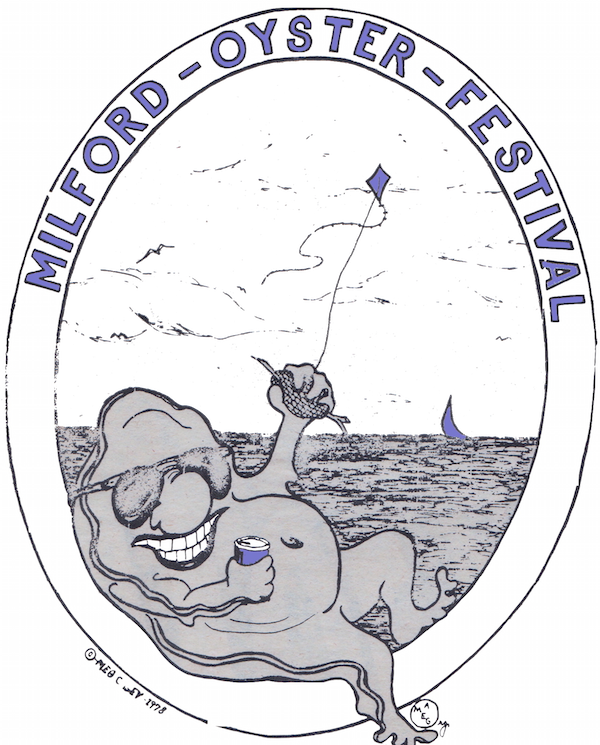
Mr. Oyster
by Meg Casey
